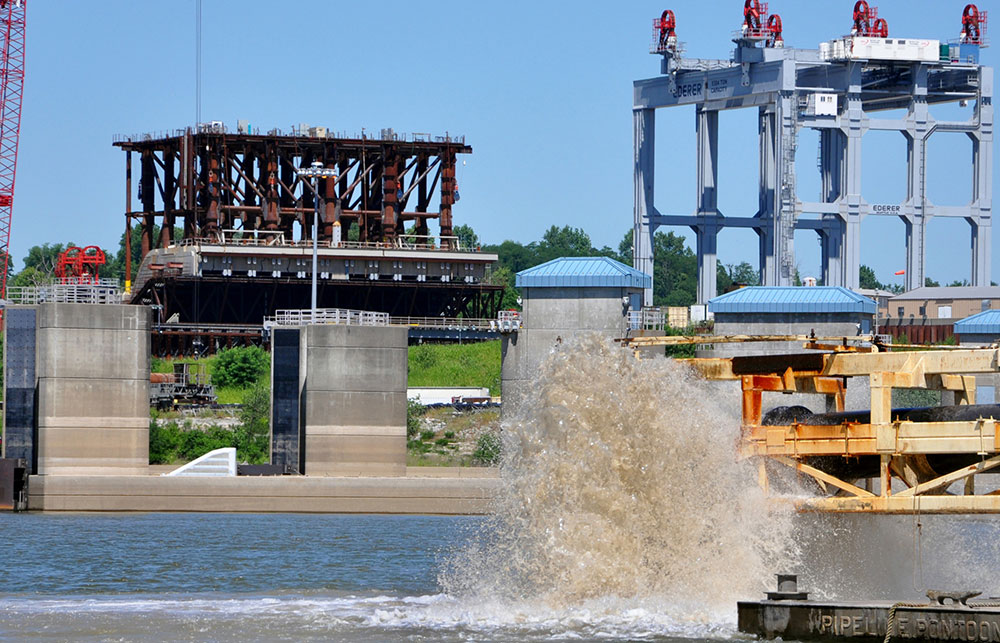The Olmsted Locks and Dam project and several other maritime projects and programs fared well in the fiscal 2014 budget deal passed by the House on Wednesday and due for approval in the Senate by Friday.
The $1.1 trillion omnibus budget bill combines 12 spending bills into a single measure and would keep the federal government functioning until Sept. 3. It ends government spending under a Continuing Resolution, which imposed out-of-date funding levels across all federal agencies, and allows programs to be prioritized, with funding going to the most important and effective programs.
Legislators were especially kind to the U.S. Army Corps of Engineers, which runs the nation’s lock and dam system on the inland rivers, giving the agency a healthy budget of $5.46 billion, an increase of $748 million over the fiscal year 2013 post-sequester enacted level.
Within the Corps’ Civil Works section, the construction account will get $1.6 billion, of which $163 million will go toward continue work on the delayed and over-budget Olmsted project on the Ohio River, which is considered the biggest construction job in the nation. The project will replace infrastructure that dates to the 1920s and serves one of the busiest commercial waterways in the country, located between Illinois and Kentucky 17 miles upriver from where the Ohio flows into the Mississippi River.
The legislation also establishes a new cost-sharing formula for the project, stipulating that 75 percent of Olmsted’s costs be paid by the federal treasury and 25 percent by the Inland Waterways Trust Fund, which is financed by a diesel fuel tax paid by the barge industry. The normal cost share is a 50-50 split between Uncle Sam and the IWTF, but cost overruns at Olmsted have been eating up just about all of the Trust Fund’s money, forcing other inland waterways projects to be put on hold.
“Federalizing a portion of the Olmsted project to allow for funding to flow to other priority projects is noteworthy,” said Michael J. Toohey, president and CEO of the Waterways Council Inc., an industry-supported group. “Congress is to be commended for recognizing the great value of our inland waterways transportation sector.”
The Corps Budget will also fund lock renovations on the Lower Monongahela River in Pennsylvania ($1.96 million) and at Lockport, Ill. ($11.4 million). In addition, an allocation of $81.5 million in undesignated funding for inland navigation would allow for four new starts, including up to two new inland projects. The Corps must develop a project rating system and give priority to projects that benefit the national economy or boost national, regional or local economic development.
The bill also includes other maritime provisions:
- It significantly increases spending for port and navigation channel improvements, with $1 billion provided from the Harbor Maintenance Trust Fund. This is a big increase from recent levels as only about half of the money available in the fund has been spent on dredging and seaport improvements.
- It provides funds to fight the spread of the Asian carp in the Great Lakes.
- It requires the Maritime Administration to report to Congress on how cuts in cargo reserved to the U.S.-flag fleet is impacting the merchant marine and develop a national strategy to assure the long-term viability of the merchant marine.
- It funds the Title XI shipbuilding program at a robust $38 million and restricts the scrapping of vessels by Marad to U.S. facilities.
- It provides $11.3 million for maintenance and repair of training ships at the state maritime academies, and $16 million to continue facilities improvements at the U.S. Merchant Marine Academy.




